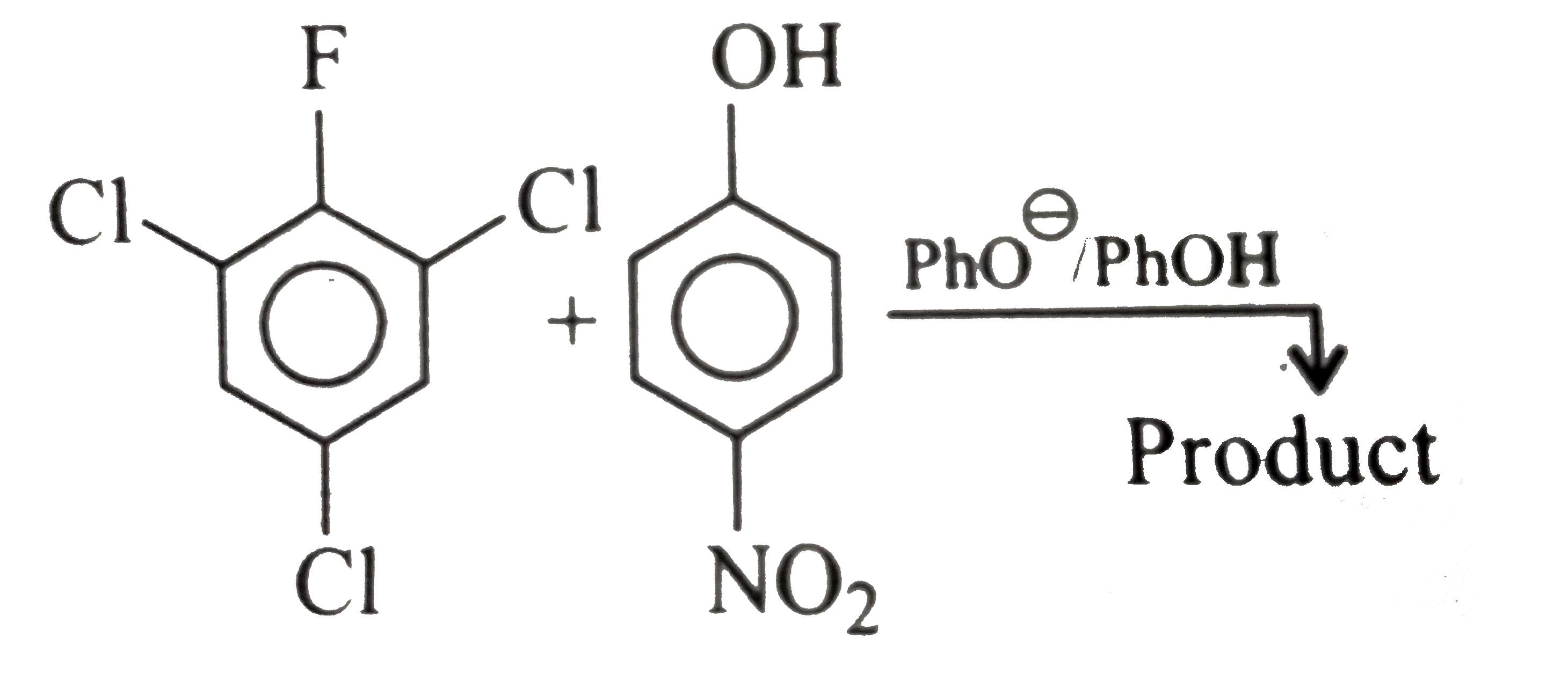Why cyanoanilinium ion (C6H4(CN)⊕NH3)(I) is a stronger acid than anilinium ion (II) ?
To determine why cyanoanilinium ion (C₆H₄(CN)⁺NH₃) is a stronger acid than anilinium ion (C₆H₅NH₃⁺), we need to analyze the stability of their conjugate bases. Here’s a step-by-step solution:
Step 1: Identify the ions
- Cyanoanilinium ion (I): C₆H₄(CN)⁺NH₃
- Anilinium ion (II): C₆H₅NH₃⁺
Step 2: Determine the conjugate bases
- The conjugate base of cyanoanilinium ion (I) is formed by deprotonating the NH₃ group:
- Conjugate base of (I): C₆H₄(CN)NH₂⁻
- The conjugate base of anilinium ion (II) is similarly formed:
- Conjugate base of (II): C₆H₅NH₂⁻
Step 3: Analyze the stability of the conjugate bases
- Conjugate base of cyanoanilinium ion (C₆H₄(CN)NH₂⁻):
- The cyano group (CN) is a strong electron-withdrawing group due to its -I (inductive) and -R (resonance) effects.
- This electron-withdrawing effect stabilizes the negative charge on the conjugate base, making it more stable.
- Conjugate base of anilinium ion (C₆H₅NH₂⁻):
- The aniline group (C₆H₅) does not have any strong electron-withdrawing groups attached.
- Therefore, the negative charge on the conjugate base is less stabilized compared to that of cyanoanilinium ion.
Step 4: Conclusion
- Since the conjugate base of cyanoanilinium ion is more stable due to the presence of the electron-withdrawing cyano group, it follows that cyanoanilinium ion is a stronger acid than anilinium ion.
Final Answer
Cyanoanilinium ion (I) is a stronger acid than anilinium ion (II) because its conjugate base is more stable due to the strong electron-withdrawing effects of the cyano group.
---
- Cyanoanilinium ion (I): C₆H₄(CN)⁺NH₃
- Anilinium ion (II): C₆H₅NH₃⁺
- The conjugate base of cyanoanilinium ion (I) is formed by deprotonating the NH₃ group:
- Conjugate base of (I): C₆H₄(CN)NH₂⁻
- The conjugate base of anilinium ion (II) is similarly formed:
- Conjugate base of (II): C₆H₅NH₂⁻
- Conjugate base of cyanoanilinium ion (C₆H₄(CN)NH₂⁻):
- The cyano group (CN) is a strong electron-withdrawing group due to its -I (inductive) and -R (resonance) effects.
- This electron-withdrawing effect stabilizes the negative charge on the conjugate base, making it more stable.
- The aniline group (C₆H₅) does not have any strong electron-withdrawing groups attached.
- Therefore, the negative charge on the conjugate base is less stabilized compared to that of cyanoanilinium ion.
- Since the conjugate base of cyanoanilinium ion is more stable due to the presence of the electron-withdrawing cyano group, it follows that cyanoanilinium ion is a stronger acid than anilinium ion.
Cyanoanilinium ion (I) is a stronger acid than anilinium ion (II) because its conjugate base is more stable due to the strong electron-withdrawing effects of the cyano group.
Topper's Solved these Questions
- GENERAL ORGANIC CHEMISTRYBOOK - CENGAGE CHEMISTRY ENGLISHCHAPTER - GENERAL ORGANIC CHEMISTRYEXERCISE - Concept
17 Videos
- GENERAL ORGANIC CHEMISTRYBOOK - CENGAGE CHEMISTRY ENGLISHCHAPTER - GENERAL ORGANIC CHEMISTRYEXERCISE - Comprehension
20 Videos
- GENERAL ORGANIC CHEMISTRYBOOK - CENGAGE CHEMISTRY ENGLISHCHAPTER - GENERAL ORGANIC CHEMISTRYEXERCISE - Solved Example
18 Videos
- CLASSIFICATION AND NOMENCLATURE OF ORGANIC COMPOUNDSBOOK - CENGAGE CHEMISTRY ENGLISHCHAPTER - CLASSIFICATION AND NOMENCLATURE OF ORGANIC COMPOUNDSEXERCISE - Analytical and Descriptive Type
3 Videos
- HYDROGEN, WATER AND HYDROGEN PEROXIDEBOOK - CENGAGE CHEMISTRY ENGLISHCHAPTER - HYDROGEN, WATER AND HYDROGEN PEROXIDEEXERCISE - Subjective Archive (Subjective)
3 Videos
Similar Questions
Knowledge Check
The major product formed in the reaction
C6H5−⊕N≡NCl⊕+H3PO2+H2O→ is :AC6H5OHBC6H5ClCC6H6DC6H5C6H5
The shape of (⊕CH3) is
View SolutionDetermine the F.C on each atom in :
(a) HOBr
(b) ⊕NH4
( c) H2O:BBr3.
View SolutionExplain the following :
(a) Why MeNH⊕CH2 (I) is more stable more than MeCH2⊕CH2 (II) when both are 1∘ carbocations ?
(b) Which of the following intermediate is unstable ?

( c) Why allylic free radical (CH2−CH=CH2)(I) is more stable than propy1 free radical (.CH2−CH2−CH3)(II), when both are 1∘ free radicals ?
View SolutionName the intermediate species formed in the following reactions :
(a) CH3CH2−N⊕≡N..→I+:N≡N:
(b) CH3CH2−C≡C−H+⊕KΘNH2→II+NH3
( c) Ph−CH=CH−Me+HBr→III+BrӨ
(d) Ph−Ph∣C∣OH−CH3+H⊕→IV+H2O
( e)CH3CH2..O..H−¯e−−→V→VI+.CH3
(f) CH3−..N=..N−CH3Δ−−→VIII+ZnI2
(h) PhCH2C1+A1C13→IX+[A1C1]Ө
(i) CH3−C≡C−CH3+Liliq.NH3−−−−→C2H5OHX+Li⊕.
View SolutionGiven reasion:
(i) Thermal stability decreases from H2O to H2Te
(ii) Fluoride ion has higher hydration enthalpy than chloride ion
(iii) Nitrogen does not form pentahalide
View SolutionExplain the effect of SN2 rates for the following reactions :
(a) Increasing the polarity of solvent.
(b) Show the T.S with all partial charges for each reaction type.
(I) Me2⊕S−Me+NH3→Me⊕NH3+Me2S
(II) MeI+NH3→Me⊕NH3+IӨ
(III) MeI+ӨOH→MeOH+IӨ
(IV) Me2S⊕−Me+ӨOH→MeOH+Me2S.
View SolutionAssertion (A):

The product is:
Reason (R ): p−NO2−C6H4O− is a stronger nucleophile than PhO−.
View Solution
